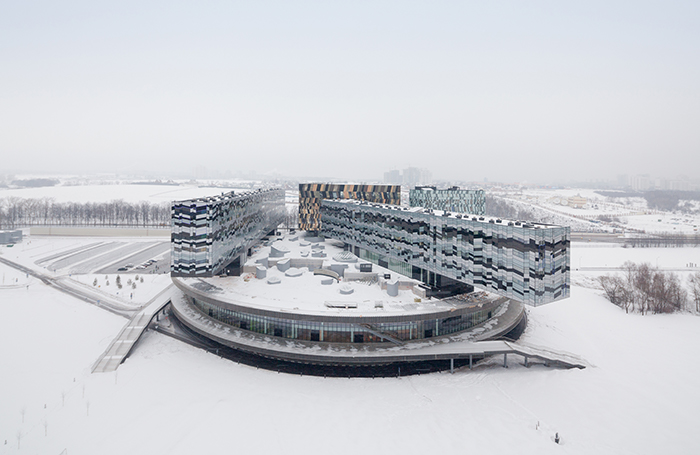Prominent British-Ghanaian architect, Sir David Adjaye, has been announced by the Royal Institute of British Architects (RIBA) as the recipient of 2021 Royal Gold Medal, the highest honor for architecture in the United Kingdom.
The prestigious award, which is personally approved by Her Majesty The Queen, is bestowed on an individual or group who have significantly influenced “either directly or indirectly on the advancement of architecture,” RIBA said in a statement.
Adjaye, 54, is the brain behind many iconic buildings around the world including the new National Museum of African American History and Culture. The celebrated architect, who has been in the industry for over 25 years, draws influences from “contemporary art, music and science to African art forms and the civic life of cities.”
“It’s incredibly humbling and a great honour to have my peers recognise the work I have developed with my team and its contribution to the field over the past 25 years,” Adjaye said in response to the award.
“Architecture, for me, has always been about the creation of beauty to edify all peoples around the world equally and to contribute to the evolution of the craft. The social impact of this discipline has been and will continue to be the guiding force in the experimentation that informs my practice. A heartfelt and sincere moment of gratitude and thanks to all the people who supported the journey to get to this moment.”
The 54-year-old was born in Tanzania to a Ghanaian diplomat. He and his family lived in Tanzania, Egypt, Yemen and Lebanon before moving to Britain at the age of nine. After graduating with an MA in 1993 from the Royal College of Art in London, Adjaye worked short term with some architectural studios before establishing a practice with William Russell in 1994. He tutored at the Architectural Association and was also a lecturer at the Royal College of Art.
Adjaye established his own studio in 2000 and first solo exhibition, David Adjaye: Making Public Buildings at the Whitechapel Gallery in London in 2006. Thames and Hudson published Adjaye’s first book, David Adjaye Houses, in 2005 and a catalogue for his first exhibition.
In 2009, he was selected as one of the team of architects to design the $500 million National Museum of African American History and Culture in Washington, D.C. The Smithsonian Institution museum, which featured Adjaye’s design of a crown motif from Yoruba sculpture, was opened by Barack Obama in 2016.

Adjaye has helped design several installations, exhibitions and has been in charge of many other international commissions to design public and private homes and other iconic buildings including the Museum of Contemporary Art in Denver; the Nobel Peace Centre in Oslo and the Skolkovo Moscow School of Management, completed in 2010. Others include the Alara Concept Store in Lagos (2016); the Moscow School of Management Skolkovo in Russia (2010); the Nobel Peace Centre in Oslo, Norway (2005) and the Aishti Foundation in Lebanon (2015).

Sir Adjaye also continues to teach at several universities where he is a visiting professor. They include Princeton University School of Architecture, the University of Pennsylvania and Harvard Graduate School of Design.
In 2007, he was appointed Officer of the Order of the British Empire (OBE) for services to British architecture. He is also a recipient of the $100,000 Massachusetts Institute of Technology’s McDermott award for excellence in the arts. He was knighted by Prince William on behalf of the Queen in the 2017 New Year Honors for services to architecture.
His other current solo and collaborative projects include the UK Holocaust Memorial and Learning Centre, the Royal Benin Museum in Benin City, Nigeria, The Studio Museum in Harlem, the International Finance Corporation (IFC) in Dakar, Senegal, the National Cathedral of Ghana, the Princeton University Art Museum in Princeton and the Thabo Mbeki Presidential Library in Johannesburg, South Africa, according to RIBA.
“At every scale, from private homes to major arts centres, one senses David Adjaye’s careful consideration of the creative and enriching power of architecture,” RIBA President Alan Jones said.
“His work is local and specific and at the same time global and inclusive. Blending history, art and science he creates highly crafted and engaging environments that balance contrasting themes and inspire us all. I believe his both practising and teaching in schools of architecture has significantly enriched his work. His artistic and social vision has created public projects that perfectly demonstrate the civic potential of architecture – fostering empathy, identity and pride.”
Jones added: “David’s contribution to architecture and design globally is already astounding, and I am excited that we have so much more of it to look forward to.”










